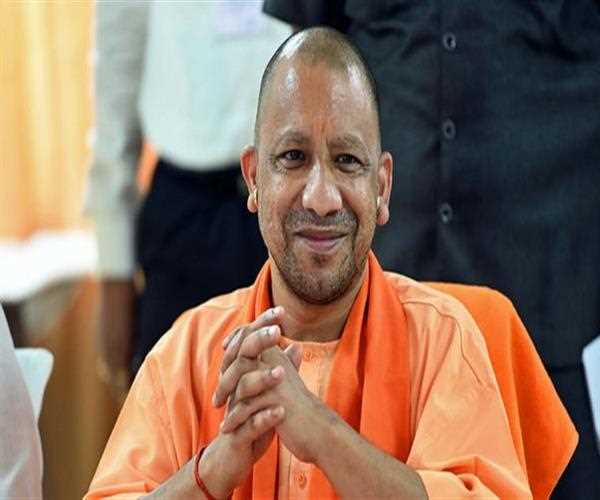
08-Feb-2024 , Updated on 2/8/2024 2:09:48 AM
Adityanath's Bold Assertion: 'Krishna asked for 5 villages, we want 3 centers
Yogi Adityanath, the Chief Minister of Uttar Pradesh created sensation when he compared recent contemporary demands from sacred sites in India with historical incidences on Mahabharata during a session held in the State Assembly. Addressing the audience, Adityanath quotes the epic Mahabharata; wherein Krishna goes to Kauravas seeking five villages in order peace, and this incident he likens to the Hindu community’s call today – three prominent religious centers should be returned to them – Ayodhya, Mathura and Kashi.
Historical reference
Adityanath’s invocation of the Mahabharata story does not only emphasize Ayodhya, Mathura, and Kashi as places that have religious importance but would make millions around the world touch upon the emotional level it has on them. The Mahabharata, one of the great Indian epics is much more than just called Rahshamah Raman meaning an image portraying mythology it is a source of moral or ethical norms that relate to Hinduism.
The perceptions that Yogi Adityanath brings, connecting historical happenings with current demands bring a benefit of complexity into the discussions around such sacred sites. By referencing the anecdote of Lord Krishna’s denouement to settle on royalties in peace for only five villages, Adityanath makes his implicit point about a quest that is timeless and enduring – where one seeks restitution and restoration of sacred spaces which are variables deep within these people.
Today the need for recovery in Ayodhya, Mathura, and Kashi suggests not just legal or political activity. It embodies a collective desire to secure cultural heritage that reinforces the religious identification efforts of the population. The love that Hindus have with these sites passes generation after generation; it is not just a religious attachment but a rebirth and identification of their cultural heritage, and rejection of subjugation by the early conquerors.
Ayodhya: The embodiment of faith and justice
The reference to Ayodhya in Adityanath’s speech doesn’t just highlight the ongoing legal battle over the Ram Janmabhoomi site but also brings into view, albeit subconsciously, a dream that has been realized without really chasing it. This accomplishment signifies the resolution of a promise based on deep-seated Hindu doctrine lineage to countless devotees throughout the world. It is a show of dominance that faith and patience have power, illustrating the value of justice with steadfastness for Hindus in times of trouble.
Mathura and Kashi: Spiritual places
Hinduism’s spiritual significance in the form of Mathura and Kashi, where Lord Krishna is said to have been born-reborn–and for which divinity abides in Kashi with Kashivishawnath Temple. Adityanath’s references to the demand related these sites with religious sentiments rooted in millions of hearts all over the world. It shows the desire of The Hindu community to keep and preserve these sacred sites with their determination to save their religious legacy as well as keep its esthetic intact.
Political Dimensions and Challenges
Adityanath’s statement also reveals the political facets of this problem and how it might pose a threat to religious harmony by changing its perceptions based on vote banks. Being situated in the socio-political setting of India, the religious and political guarantee is reflected at this point as an intersection site.
The debate on Ayodhya, Mathura, and Kashi continues to represent larger societal debates in modern India of identity; and ancestry respectively identifiable as heritage legacies that must be preserved for succeeding generations. Given these, the conclusion of such debates not only matters for the communities involved but also forms a picture with which we identify ourselves, and how religious pluralism and cultural diversity within the contemporary India has to be dealt with.
Looking Ahead
As Adityanath’s statements revive conversations across these complex and contested topics it is rather imperative to chart a way forward that honors constructive dialogue with peaceful resolution. The process of meeting the aspirations of various sections within a secular community while observing constitutional rights and religious freedoms calls for an almost insurmountable task from policymakers as well as stakeholders. Yet, providing the ground for sane and respectful debate while upholding a pledge of mutual understanding and tolerance would lay down an important path to accomplishments toward making amends. Most importantly, it will be necessary to adopt fairness and compassion in dealing with such issues since they prove quite delicate requiring the spirit of togetherness among different communities that have varying opinions.
By his reference to the Mahabharata story and by stressing Ayodhya, Mathura, and Kashi regarding which he has asserted that they are not only religious but also cultural, Adityanath draws attention to how complicated this discourse is. Through the reference to historical parallels and by extolling religious significance underlying these sacred places, Adityanath draws attention to the perennial nature of heritage in the quest for managing issues about faith identity as well as governance in a multiethnic yet pluralist society.
On the same note, as India embarks on a path of socio-political evolution and changes its course forever by resolving religious conflicts and safeguarding cultural heritage; harmony will be achieved while respecting each other's opinion and beliefs.

Content writer
I am a content writter !
Join Our Newsletter
Subscribe to our newsletter to receive emails about new views posts, releases and updates.
Copyright 2010 - 2026 MindStick Software Pvt. Ltd. All Rights Reserved Privacy Policy | Terms & Conditions | Cookie Policy